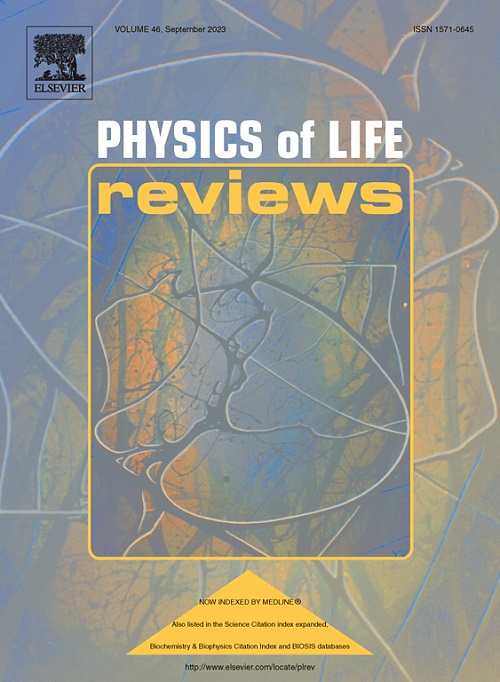The major-minor mode dichotomy in music perception
IF 13.7
1区 生物学
Q1 BIOLOGY
引用次数: 0
Abstract
In Western tonal music, major and minor modes are recognized as the primary musical features in eliciting emotional responses. The underlying correlates of this dichotomy in music perception have been extensively investigated through decades of psychological and neuroscientific research, yielding plentiful yet often discordant results that highlight the complexity and individual differences in how these modes are perceived. This variability suggests that a deeper understanding of major-minor mode perception in music is still needed. We present the first comprehensive systematic review and meta-analysis, providing both qualitative and quantitative syntheses of major-minor mode perception and its behavioural and neural correlates. The qualitative synthesis includes 70 studies, revealing significant diversity in how the major-minor dichotomy has been empirically investigated. Most studies focused on adults, considered participants' expertise, used real-life musical stimuli, conducted behavioural evaluations, and were predominantly performed with Western listeners. Meta-analyses of behavioural, electroencephalography, and neuroimaging data (37 studies) consistently show that major and minor modes elicit distinct neural and emotional responses, though these differences are heavily influenced by subjective perception. Based on our findings, we propose a framework to describe a Major-Minor Mode(l) of music perception and its correlates, incorporating individual factors such as age, expertise, cultural background, and emotional disorders. Moreover, this work explores the cultural and historical implications of the major-minor dichotomy in music, examining its origins, universality, and emotional associations across both Western and non-Western contexts. By considering individual differences and acoustic characteristics, we contribute to a broader understanding of how musical frameworks develop across cultures. Limitations, implications, and suggestions for future research are discussed, including potential clinical applications for mood regulation and emotional disorders, alongside recommendations for experimental paradigms in investigating major-minor modes.
音乐感知中的大调-小调二分法。
在西方调性音乐中,大调和小调被认为是引发情绪反应的主要音乐特征。几十年来,心理学和神经科学研究对音乐感知中这种二分法的潜在关联进行了广泛的研究,得出了大量但往往不一致的结果,突出了这些模式感知方式的复杂性和个体差异。这种可变性表明,对音乐中大调-小调调式感知的更深入理解仍然是必要的。我们提出了第一个全面的系统回顾和荟萃分析,提供了大调-小调模式感知及其行为和神经相关的定性和定量综合。定性综合包括70项研究,揭示了如何对主要-次要二分法进行实证研究的显著多样性。大多数研究集中在成年人身上,考虑到参与者的专业知识,使用现实生活中的音乐刺激,进行行为评估,主要是在西方听众中进行的。行为、脑电图和神经影像学数据(37项研究)的荟萃分析一致表明,主要和次要模式引起不同的神经和情绪反应,尽管这些差异在很大程度上受到主观感知的影响。基于我们的研究结果,我们提出了一个框架来描述音乐感知的大调-小调模式(l)及其相关因素,包括年龄、专业知识、文化背景和情绪障碍等个人因素。此外,本研究还探讨了音乐中大调小调二分法的文化和历史含义,考察了它在西方和非西方背景下的起源、普遍性和情感联系。通过考虑个体差异和声学特征,我们有助于更广泛地了解音乐框架如何跨文化发展。讨论了未来研究的局限性、意义和建议,包括情绪调节和情绪障碍的潜在临床应用,以及研究主要-次要模式的实验范式的建议。
本文章由计算机程序翻译,如有差异,请以英文原文为准。
求助全文
约1分钟内获得全文
求助全文
来源期刊

Physics of Life Reviews
生物-生物物理
CiteScore
20.30
自引率
14.50%
发文量
52
审稿时长
8 days
期刊介绍:
Physics of Life Reviews, published quarterly, is an international journal dedicated to review articles on the physics of living systems, complex phenomena in biological systems, and related fields including artificial life, robotics, mathematical bio-semiotics, and artificial intelligent systems. Serving as a unifying force across disciplines, the journal explores living systems comprehensively—from molecules to populations, genetics to mind, and artificial systems modeling these phenomena. Inviting reviews from actively engaged researchers, the journal seeks broad, critical, and accessible contributions that address recent progress and sometimes controversial accounts in the field.
 求助内容:
求助内容: 应助结果提醒方式:
应助结果提醒方式:


